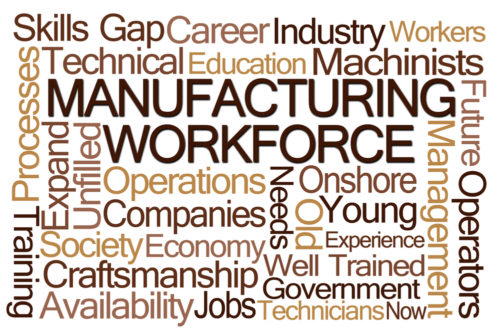
Based on what we’ve been hearing from our clients who own manufacturing companies, their biggest concern of late is not bringing in new business, rather it’s having enough staff on hand to get the product out the door.
With the unemployment rate just over 4% (or thereabouts) in CT according to the CT Department of Labor, one might think that most of the employable people who want jobs have jobs.
Maybe it’s time to consider a workforce market that is often overlooked – people with Autism Spectrum Disorder (ASD). According to Autism Speaks, about 90% of adults with autism are unemployed or under-employed.
Although everyone with autism is different, common traits are a very high concentration level, good attention to detail and analytical skills. Additionally, autistic employees tend to be more reliable in terms of timeliness and absenteeism and are very loyal. They are often happy in jobs other people find boring. What employer wouldn’t appreciate these traits?
There are a growing number of success stories from companies that have set-up hiring programs for autistic adults. Some of the major companies include Walgreens, Microsoft, Cintas, Quest Diagnostics, and HewlettPackard.
According to James Emmett, Lead Consultant at ADVICE, a team of national disability employment consultants, that worked with Quest Diagnostics to set up their ASD hiring program,
People with autism are an underutilized segment of the workforce,” Mr. Emmett said. “And it’s not just those with college degrees or high-level skills who are qualified to work, people with a range of abilities can be enabled, through training and supports, to work in a variety of jobs.”
James Emmett, ADVICE
Companies who have developed programs to hire people with autism spectrum disorder (ASD), have found that it benefits their bottom lines.
Issues that companies may typically struggle with, like turnover, productivity and quality of work see improvement with the incorporation of a diversity hiring plan that includes employees with ASD.
Additionally, autistic individuals may have enhanced skillsets applicable to certain jobs.
The website DifferentBetter.us suggests that “The Power of Neurodiversity” can benefit any business.
The diversity of human minds can be a powerful asset in any industry, and tapping into the strengths of autistic individuals can produce extraordinary results. Our differences, far from needing to hold us back, can propel us forward to better ideas, better teams and better organizations.”
DifferentBetter.US
Then they challenge you to see for yourself by taking the “Different Better Challenge”. The challenge tests your perception, perspective and logic.
Take the challenge. I did. It wasn’t easy. I think you’ll find it enlightening. Here’s the link: http://differentbetter.us/
The DifferentBetter.Us Challenge is an example of a challenge developed to test aptitude of applicants interested in programming, software development or testing. But practical tests or online challenges could be designed to test for many positions related to various manufacturing positions.
How to go about creating a Neurodiversity program for your organization.
The first recommendation is to look at other companies who have implemented career outreach programs. Companies with experience employing autistic individuals can provide advice regarding recruitment, the interview process, and mentorship programs that will help make your program advantageous to your bottom line.
The AutismEmpowerment Kit provides lists of several companies and resources you may find useful.
You may have to make some accommodations to your work processes to incorporate autistic individuals successfully into your workforce. In most cases, the changes recommended would probably benefit all employees and provide for a better and more productive work environment for everyone.
Some of the general recommendations include:
- Apply the same performance standards to all employees (you’re running a business not a charity)
- Use written and verbal communications to help ensure employee comprehension
- Set clear expectations of the job requirements
- Provide frequent feedback and recommendations to complete the job successfully
- Provide a mentor to help new employees adjust to the work environment
- Ensure the employee understands they are free to offer suggestions or ask questions
If you’re interested in learning more about incorporating autistic employees into your workforce, there are some excellent resources below.
Need more inspiration? Read some of the success stories noted in the AutismEmpowerment Kit or watch the YouTube video below.